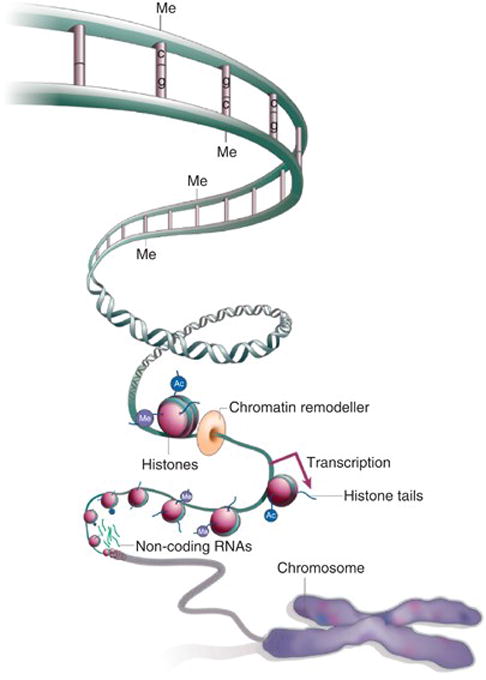Figure 3.

Schematic representation (reproduced from AACR Cancer Research Human Epigenome Task Force, Nature 2008; 454: 711–755) (1) of the principal epigenetic mechanisms: DNA methylation, histone modifications, chromatin remodeling and non-coding RNA (mainly, microRNAs), each of which alters how genes are expressed without altering the underlying DNA sequence. DNA methylation refers to the addition of a methyl (CH3) group to the DNA strand itself, often to the fifth carbon atom of a cytosine ring which causes gene silencing. Histones are core protein components of chromatin complexes which provide the structural backbone around which DNA wraps at regular intervals. Post-translational modifications of the basic side-chains in histone tails include methylation, acetylation, phosphorylation and ubiquitinylation which are critical for regulating chromatin function. The ncRNAs-associated silencing is a type of post-transcriptional gene modification during which the expression of one or more genes is downregulated or suppressed by microRNAs: small non-coding stretches of RNA.
